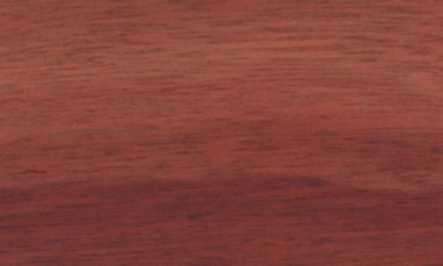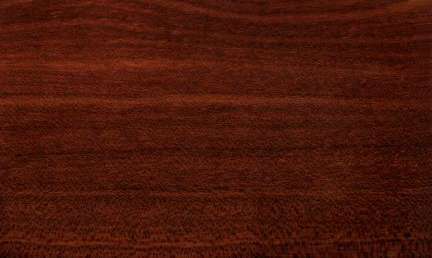  
Satine (Brosimum rubescens)
Family: Moraceae
Common names: Amapa rana, Bloodwood, Conduru, Doekaliballi, Falso pao brasil, Ferolia, Legno satino, Muirapiranga, Palo de oro, Pau rainha, Satijnhout, Satine, Satine rouge, Satine rubane, Satinholz, Satinwood, Siton paya
Distributed in: Brazil, French Guiana, Guyana, Suriname (Central America, Latin America)
Distribution overview: Tropical South America (Guyanas + Amazonas).
Common uses: Bedroom suites, Billiard-cue butts, Cabinetmaking, Carvings, Drawer sides, Drum sticks, Furniture , Kitchen cabinets, Living-room suites, Marquetry, Musical instruments , Office furniture, Organ pipes, Piano keys, Pianos , Radio - stereo - TV cabinets, Sounding boards, Sporting Goods, Turnery, Violin bows, Violin, Woodwork , Xylophones
Product sources: The ITTO reports that timber production is rather low and is used exclusively for local consumption. Sapwood Color The clearly demarcated sapwood is yellowish white in color.
Environment profile: Widespread
Tree size: Trunk diameter is 100-150 cm
Colors: the heart isOrange, Yellowand the sapwoodWhite, Yellow.The grain isStraight to interlocked, the textureVery fine
Natural durability: Resistant to decay-causing organisms, termites, and dry wood insects, Very durable
Odor: No specific smell or taste
Kiln Drying Rate: Naturally dries slowly
Drying Defects: Slight twist/warp, Splitting
Ease of Drying: Thick Stock Requires Care
Blunting Effect: High to severe
Boring: Fairly difficult to very difficult
Carving: Fairly Difficult to Very Difficult
Cutting Resistance: Fairly Difficult to Very Difficult to saw
Gluing: Poor to Very Poor Results
Mortising: Fairly Difficult to Very Difficult
Moulding: Fairly Difficult to Very Difficult
Movement in Service: Fairly Difficult to Very Difficult
Nailing: Pre-boring recommended
Planing: Fairly Easy to Very Easy
Resistance to Impregnation: Resistant sapwood
Response to hand tools: Fairly Difficult to Difficult to Work
Routing recessing: Fairly Difficult to Very Difficult
Screwing: Possible if prebored
; Turning: Very Good to Excellent Results
Polishing: Very Good to Excellent; Staining: Poor to Very Poor; Varnishing: Poor to Very Poor;
- Numerical data Metric
- Numerical data English
- Strength properties
- References
 |
 |
 |
 |
| Item |
Green |
Dry |
Metric |
| Specific Gravity |
|
0,63 |
|
| Density |
|
|
kg/m3 |
| Bending Strength |
|
|
kg/cm2 |
| Crushing Strength |
|
|
kg/cm2 |
| Hardness |
|
|
kg |
| Impact Strength |
|
|
cm |
| Shearing Strength |
|
|
kg/cm2 |
| Stiffness |
|
|
1000 kg/cm2 |
| Tangential Shrinkage |
|
|
% |
| Radial Shrinkage |
4 |
|
% |
| Weight |
|
1153 |
kg/m3 |
| Maximum Load |
|
|
cm-kg/cm3 |
| Toughness |
|
|
cm-kg |
| Static Bending |
|
|
kg/cm2 |
|
 |  |  |  | | Item | Green | Dry | English | | Specific Gravity | | 0.63 | | | Weight | | 72 | lbs/ft3 | | Radial Shrinkage | 4 | | % | | Tangential Shrinkage | 6 | | % | |
Chichignoud, M., G. Deon, P. Detienne, B. Parant, and P. Vantomme. 1990. Tropical Timber Atlas of Latin America. International Tropical Timber Organization (ITTO) and Centre Technique Forestier Tropical (CTFT, 45 bis, Avenue de la Belle Gabrielle, Nogent-sur-Marne, Cedex, France.WCMC. 1992. Conservation Status Listing - Trees and Timbers of the World. World Conservation Monitoring Center-Plants Programme, Cambridge, CB3 ODL, United Kingdom.
|










